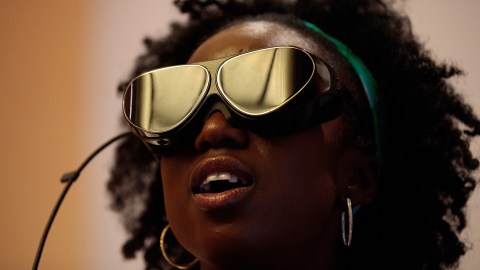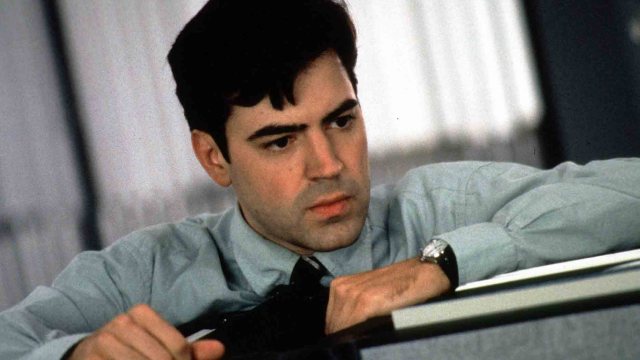Virtual Reality and Psychedelics are Opening New Pathways to Treating Mental Health Disorders

For much of history the discussion of mental health was considered taboo. People simply “weren’t right,” or, in a mystical-psychological take, they might be “touched by spirit.” Indeed, correlation between psychotic states and religious revelation is longstanding. Speculation of the eternal aside, one in four people are expected to suffer from mental health issues every year. An evolving discussion over what that entails and how to treat the range of issues implicated is unavoidable.
Two interventions—one just reaching the mainstream, the other quite old—share a common bond in altering the way we experience reality. Both are showing potentially game-changing results in treatment, which should open the doors to more research.
Throughout the twentieth century mental health had two complementary treatments: talk therapy and pharmaceuticals. Both have had their victories and seen there share of disasters, especially when the latter is implemented to avoid the rigors of the former. Clinical psychology professor Daniel Freeman and his brother, the writer Jason Freeman, argue that talking does not match the experience of problem-solving in the real world:
Counselling can be effective to a degree, but the most powerful changes happen when individuals are presented with the situations that cause them distress and directly learn how to think, feel, and behave more constructively. That means getting out of the consulting room and into the real world, with the therapist acting much more like a personal trainer or leadership coach.
Enter virtual reality. One reason talk therapy is limited is time, while pharmaceutical intervention, while successful in treating certain disorders, also has numerous side effects, including sleep disruption, gastrointestinal distress, emotional seesawing, sexual dysfunction, among others. Strapping on a headset and opening an app that places the participant in a crowded mall (agoraphobia) or on top of a skyscraper (acrophobia) could help rewire their phobias.
Recently I strapped into virtual reality for the second time—the first was a cheap cardboard model that was not all-consuming—and can attest to its overwhelming neurological presence. Even while sitting on the patio of a Santa Monica restaurant I was completely immersed in the robo-technic world of electronic dance music and Anonymous-style lingo of this particular app. In the panoramic virtual world your brain has no choice but to treat it as real regardless of its illusory nature—much the same can be said of life itself in this regard. We all see through the lenses of our illusions.
A second bonus, according to the Freeman brothers, is that, as in dreams, virtual reality is a “safe space” for us to engage in problem solving that we’d normally be reluctant to attempt “out there.”
Understandably, the thought of facing a difficult situation — even as part of a course of therapy — can be off-putting for many people. But because VR is not real that reticence tends to disappear. We’ll do things in VR that we’d be reluctant to try in normal life.
Lessons learned in the unreal world are transferrable, giving VR its therapeutic power. So far the 285 studies published on virtual reality and mental health are encouraging. Sufferers of social anxiety, PTSD, and phobias are finding success. The brothers speculate that other problems, such as depression, eating disorders, and alcoholism, might also be treated in the virtual world. They even foresee VR as being a diagnostic tool, cheaper and more accessible than fMRI machines and talk therapy sessions.
While enthusiastic, the brothers recognize that we’re at an early stage. We should always proceed with caution when considering any treatment to be a silver bullet. Yet the original virtual reality—psychedelics—keeps emerging in new research as a means for treating mental health. While this course of treatment has its own challenges—legality, dosages, individual neurochemistry—the results are favorable.
Phobias and disorders are one thing, but psychosis and schizophrenia fall into different categories. Many of us suffer the consequences of trauma and stress yet are still able to function in society. Beyond that an entire range of mental health issues ravage an under-discussed population.
Psychedelics were thrown into Nixon’s racist power grab in the early seventies, causing a wide range of substances to be taken off the market for research. Enthusiasts and scientists remained on-guard for decades, but the last few years have offered a renaissance in psychedelic research, with positive results in anxiety, nicotine addiction, and depression. As Taylor Beck reports, this has led to even more profound research:
By creating a brief bout of psychosis in a healthy brain, as indigenous healers have for millennia, scientists are seeking new ways to study—and perhaps treat—mental illness.
Identifying the neurological basis of symptoms is necessary in treating the ailment. Since disorders like schizophrenia are comprised of a number of symptoms, targeting each one pharmacologically might yield better results than trying to treat the disorder as a whole.
Beck notes that a range of psychedelics, including psilocybin, mescaline, and LSD all act on serotonin, which is critical in mood regulation. Neuropharmacologist Mitul Mehta believes the exact reason one hallucinates—be it schizophrenia, mania, or Parkinson’s—might not be pertinent if you can target the hallucinatory act itself, giving psychedelics a potentially broad range of disorders to work on.
Which is what a Swiss study Beck reports on discovered. Inducing temporary psychosis and hallucinations with psilocybin in thirty-six people, researchers attempted to block the “deluge of serotonin activation” that occurs in hallucinations. Participants were given the antipsychedelic drugs buspirone and ergotamine to accomplish just that. In this case psilocybin is not treating schizophrenia, but being used to mimic it to discover the efficacy of serotonin-blocking substances.
Buspirone restrained the hallucinations, though it didn’t prevent the “anxious sense of ego dissolution or fear of going insane” sometimes associated with psychedelics. In terms of this research, though, it’s a win, with psilocybin working to mimic psychosis in the brains of healthy participants. This itself is progress in understanding such disorders, considering so much of what we’ve learned in the last few centuries was only discovered through the brains of those already afflicted.
Mental health problems are chronic. Causes, triggers, and reasons are too long for any singular substance or virtual reality to address. But these new approaches should be welcomed by mental health specialists, empowering them with noninvasive (or controllably invasive) means of better understanding what’s going on inside of their patients’ heads. We know it’s all chemistry, and no chemical should be denied its therapeutic potential.
—
Derek’s next book, Whole Motion: Training Your Brain and Body For Optimal Health, will be published on 7/4/17 by Carrel/Skyhorse Publishing. He is based in Los Angeles. Stay in touch on Facebook and Twitter.





